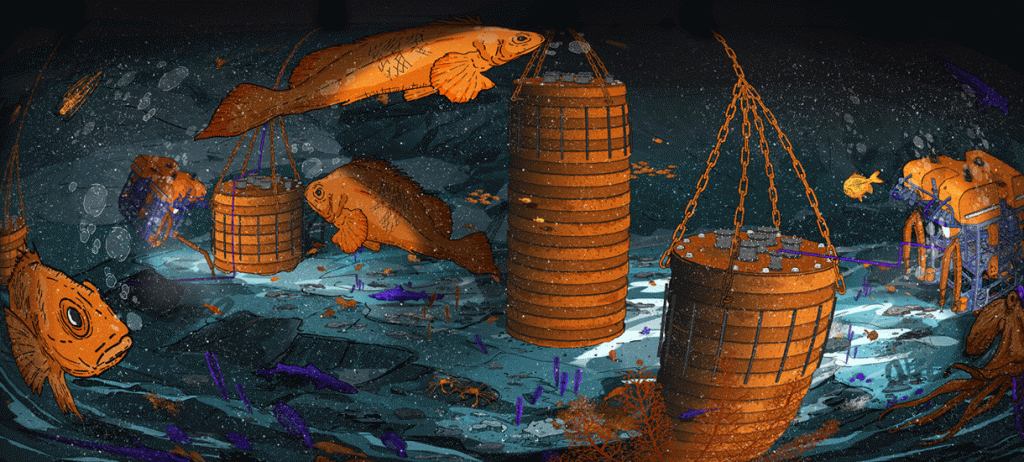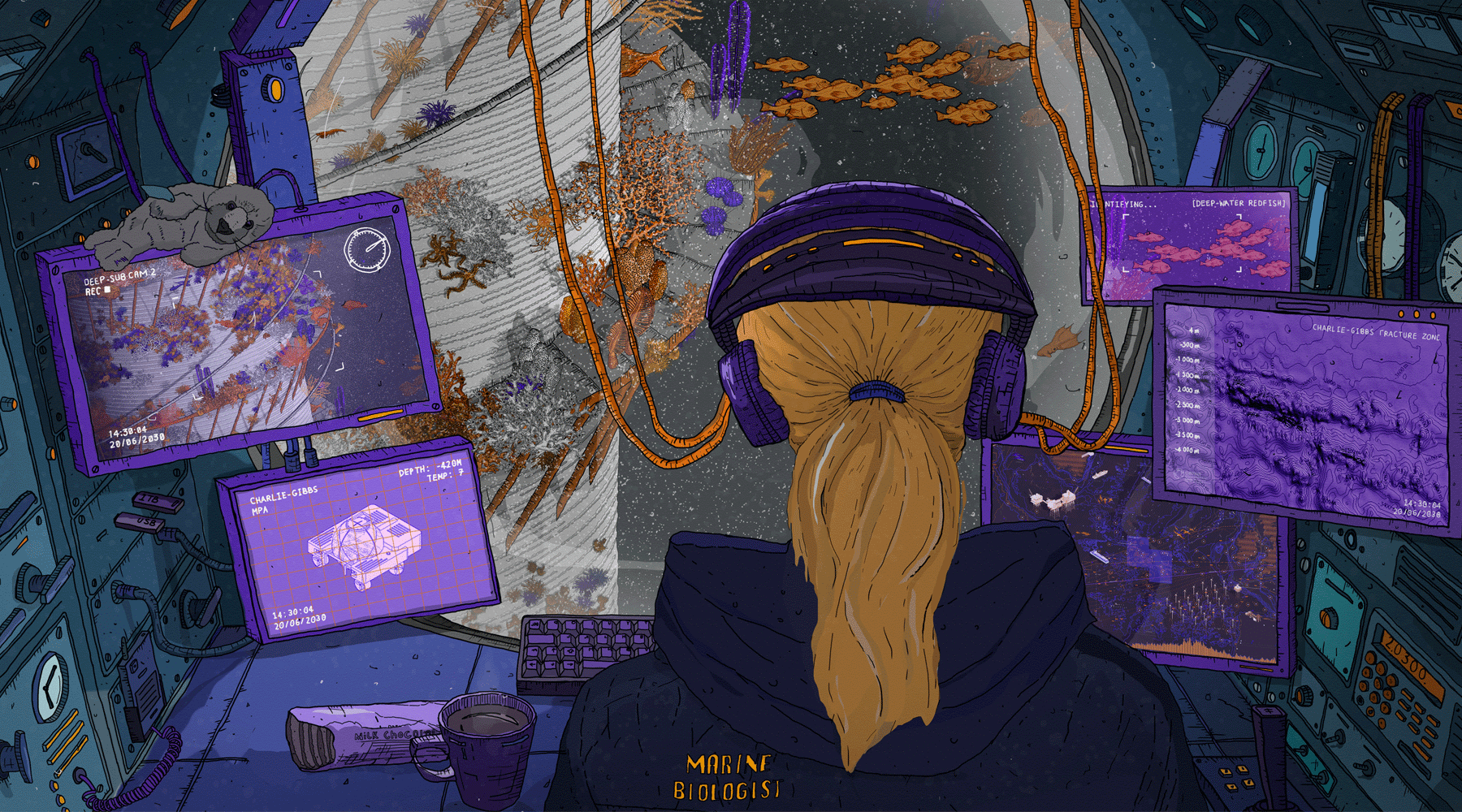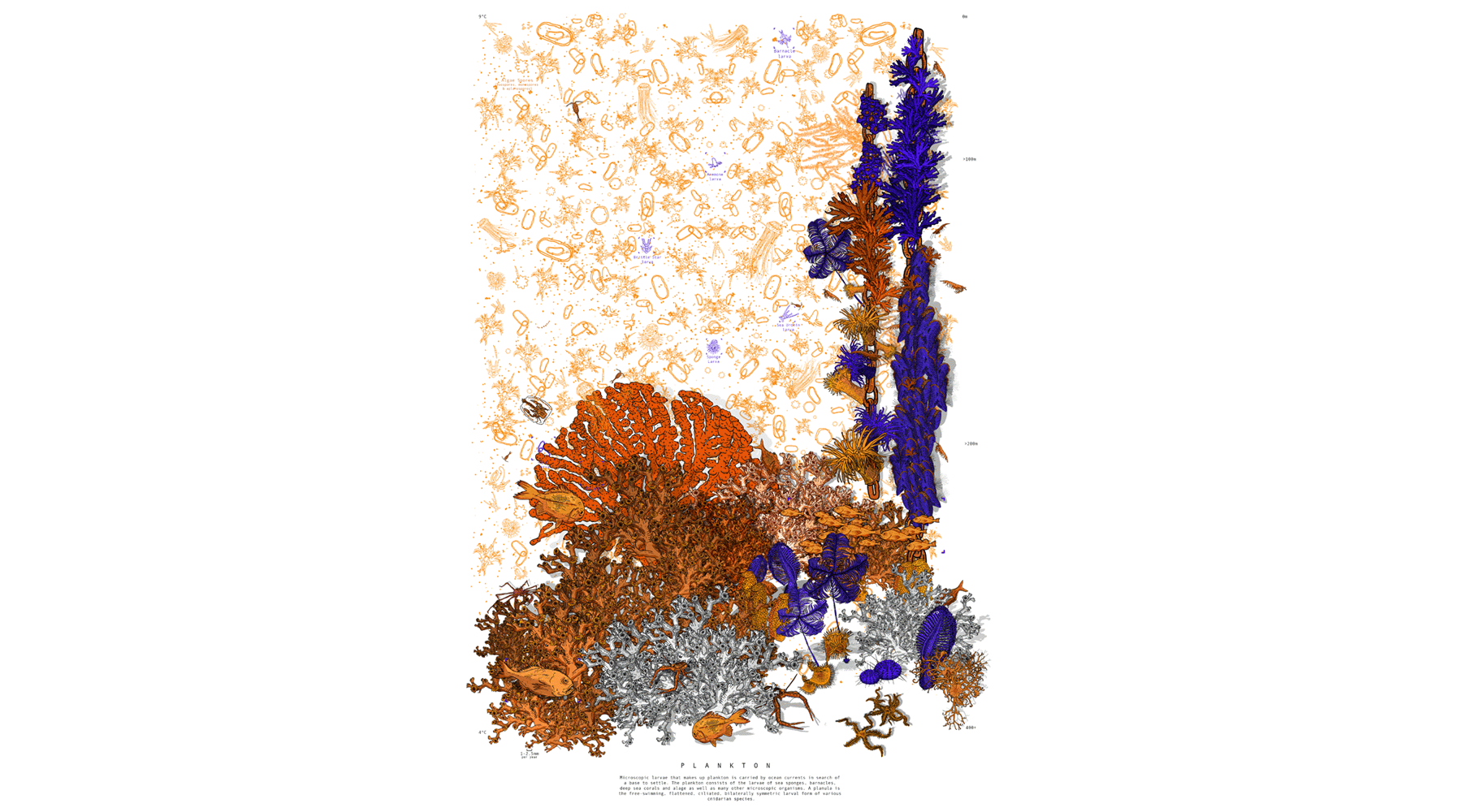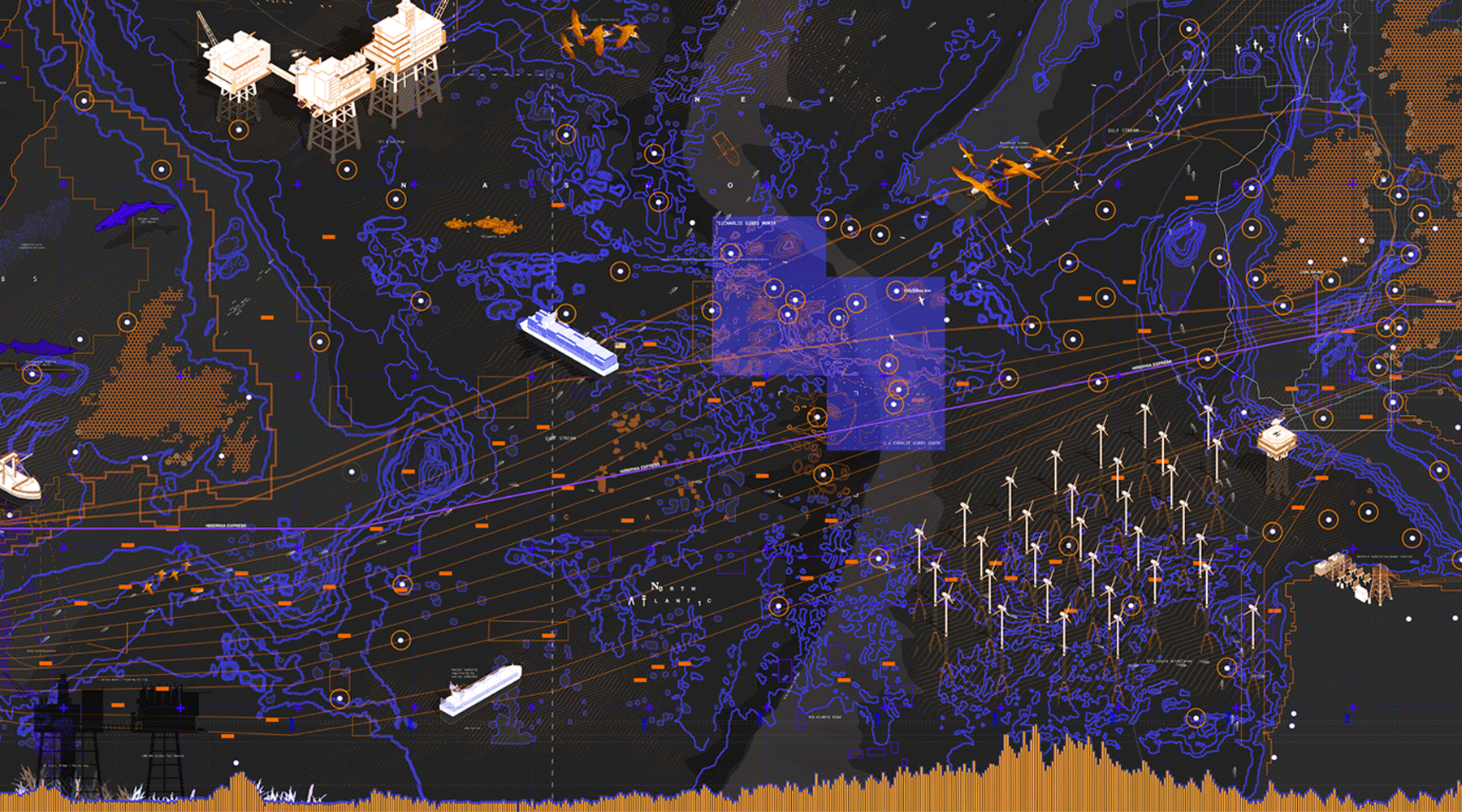Charlie-Gibbs: Conserving the More-than Human Through Off-shoring Financial Data Centres
Jade Blanchard-McKinley / Studio Otero, Dalkir & Pestellini (London, 2019)
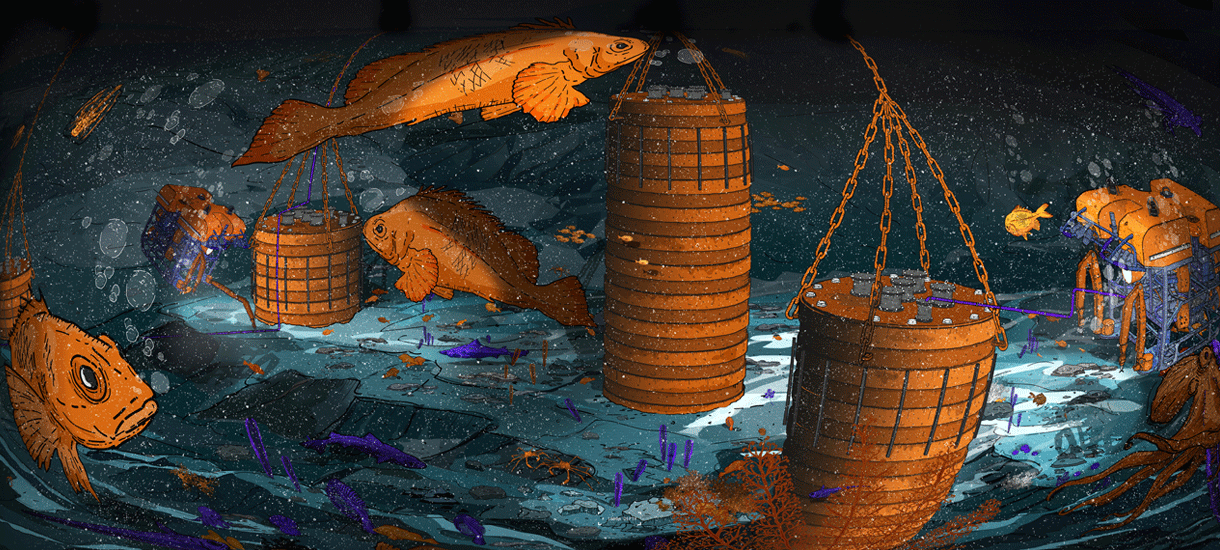
Charlie-Gibbs examines the opportunities of off-shoring financial data centres as a tool for conserving the More-than-human from destructive commercial fishing practices. Drawing upon Microsoft’s prototype oceanic data centre, Project Natick, this project speculates that high-frequency algorithmic financial trading will be a catalyst for the emergence of future off-shore data centres. Driven in part by the consequence of human fallibility, these automated oceanic structures rely on sea water cooling, nitrogen environments, artificial intelligence and remote oceanic worlds. The project takes a more-than-human perspective incorporating data, machine, human and animal viewpoints. It rethinks these marine architectures with a focus on creating agency to conserve the more-than-human.
Through extensive map making, the location of the project was informed by overlaying the results of the study, Relativistic Statistical Arbitrage by AD Wissner-Gross and CE Freer (MIT 2010), with maps of Marine Protected Areas (MPA), offshore infrastructures such as oil and gas rigs, shipping routes, telecommunications cable routes, and annual migratory routes. The results of Gross and Freers’ study located the optimal trading node locations between the leading global financial trading centres – many of which fell within marine geographical boundaries. The results highlighted an area known as Charlie-Gibbs in the mid North Atlantic ocean – one of the world’s first MPAs set within international waters (areas beyond national jurisdiction). Charlie-Gibbs’ underwater communities have suffered over three decades of exploitative overfishing and bottom trawling practices.
The project proposes using the physical data centre in conjunction with the United Nations Convention on the Law of the Sea (UNCLOS) to prevent illegal fishing practices. The legal provisions of UNCLOS that apply to the proposed structure create a friction between the powerful high frequency trading and data technology sectors on the one side, and the illegal trawlers who may damage the data centre and telecommunications cables on the other.
The proposal furthermore seeks to counteract habitat lost to trawling. Data centre servers have a lifespan of approximately 5-10 years. When the servers become obsolete they will be released from the capsule and floated to the water’s surface for collection, leaving behind their outer shell. The cylindrical steel structure has a strake spiralling around its body. The strake, commonly used in offshore oil and gas rigs technologies to create stability, circulates microscopic food particles, a vital food source for life below the photic zone. A foundational part of the local ecosystem is the reef building Lophelia Pertusa coral which has been heavily decimated by bottom trawling. To encourage the structures colonisation by the coral and associated marine lifeforms it is coated in pH neutral limestone concrete, the same mineral of which Lophelia coral constructs its colonies.
In sum, the contradictory structure achieves a compromise between the invasion of marine space by the human and the machine, and the preservation of natural life.
Project Credits: Jade Blanchard-McKinley, Studio ADS8: Data Matter: “Digital Networks, Data Centres & Posthuman Institutions”, Tutors: Kamil Hilmi Dalkir, Marina Otero Verzier & Ippolito Pestellini Laparelli, Royal College of Art.

